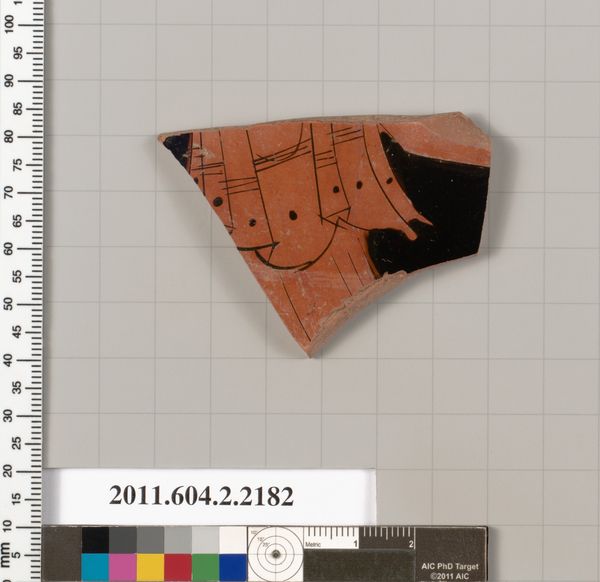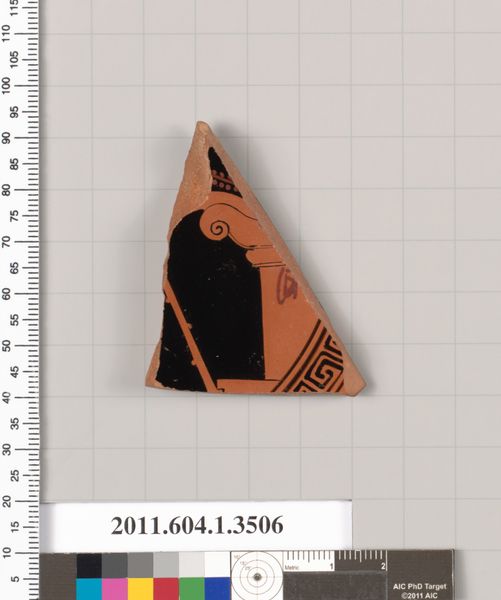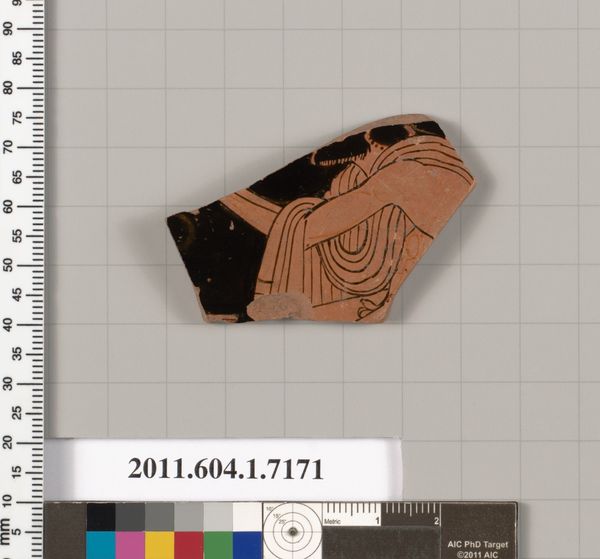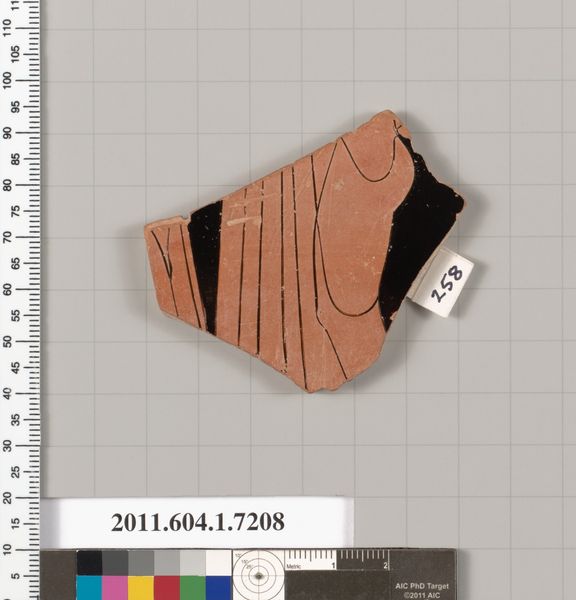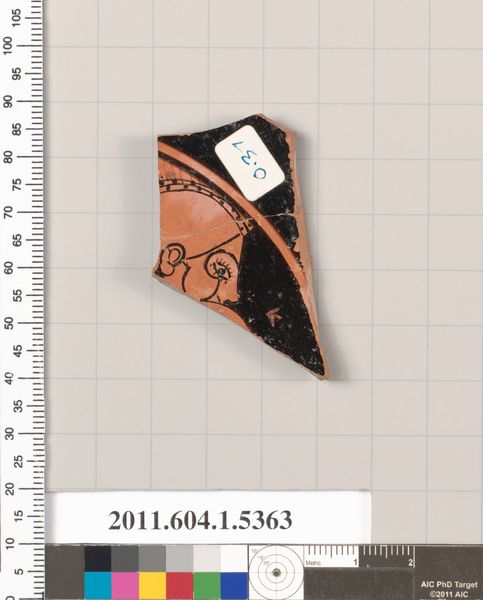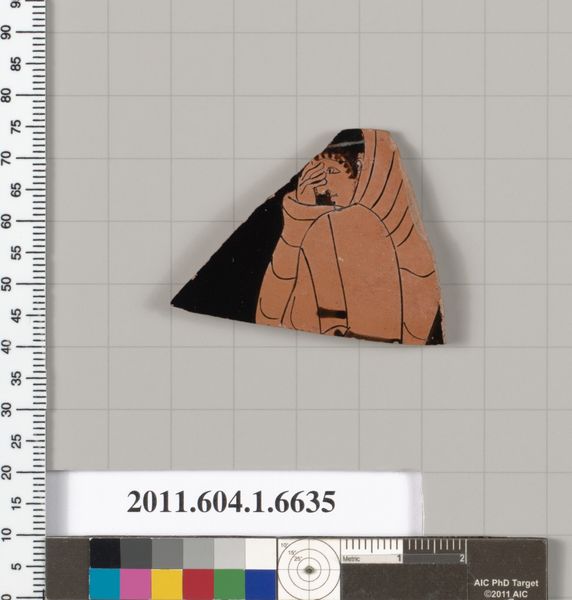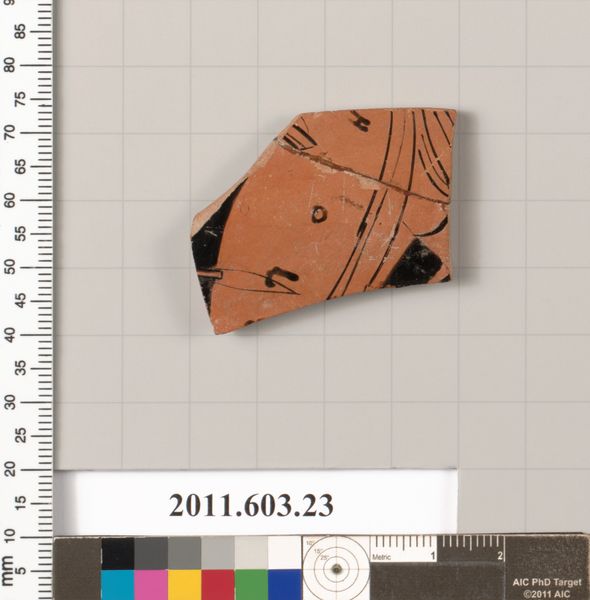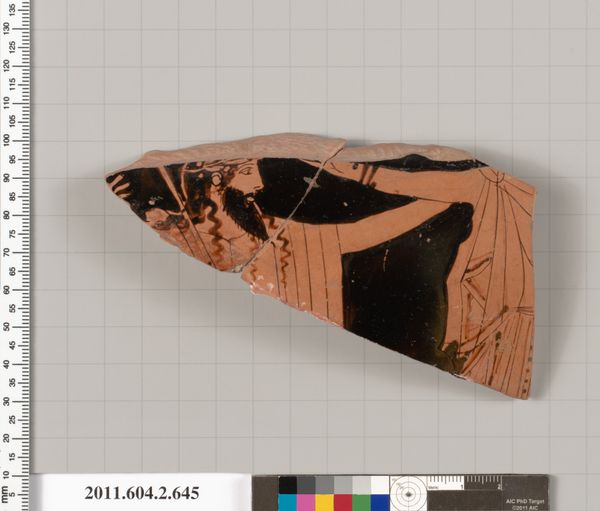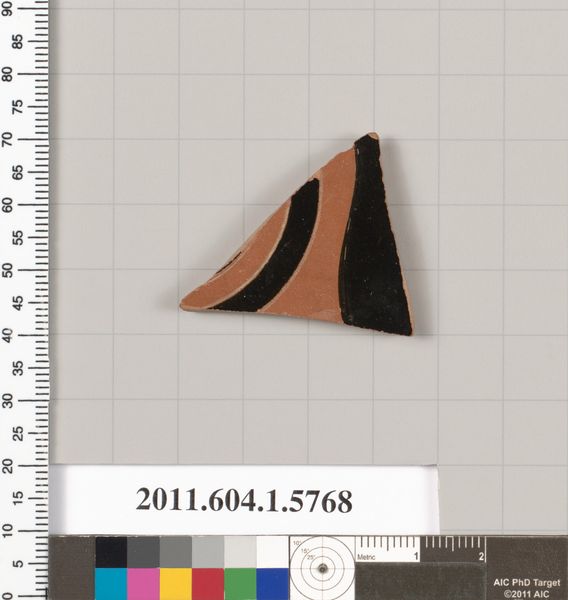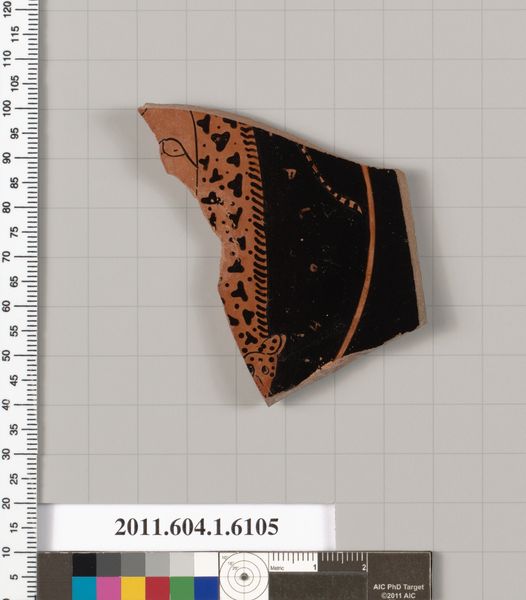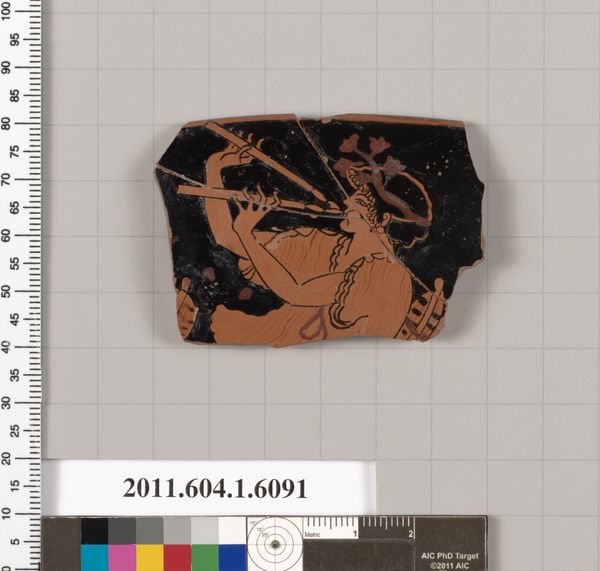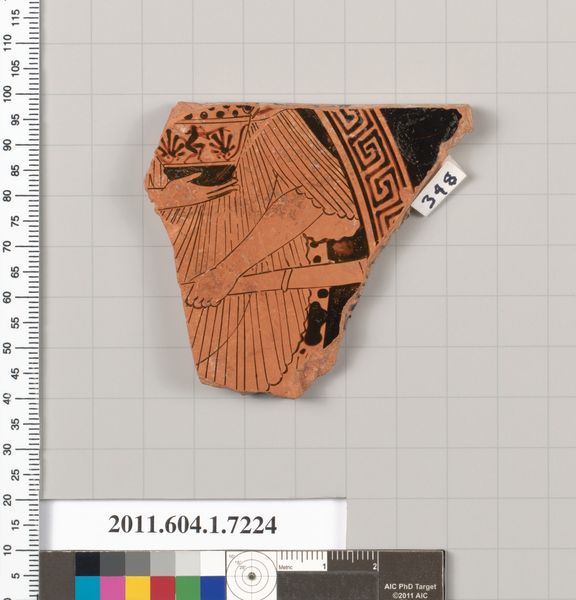
ceramic
#
object
#
greek-and-roman-art
#
ceramic
#
vase
#
figuration
#
roman-art
#
ancient-mediterranean
#
line
Copyright: Public Domain
Editor: Here we have a fragment of a terracotta kylix, or drinking cup, created around 500 BC by the artist Makron. It's currently housed at the Metropolitan Museum of Art. Just a piece remains, but the figures drawn with such precision are so elegant! How do you interpret this fragment? Curator: The surviving fragment, with its stark contrast between the black figures and the terracotta ground, showcases a sophisticated understanding of line and form. Notice the strategic placement of the black glaze to define the figure's hair and beard, creating a powerful visual weight. Editor: The lines are so simple but create depth and dimension. Curator: Precisely. This simplification isn't a lack of skill but rather a deliberate aesthetic choice. The artist focuses on the essential lines necessary to convey form and movement. What do you notice about the composition within this constrained space? Editor: There seems to be an interaction happening. Maybe two people facing each other over an object of sorts? The way the lines converge focuses my attention. Curator: Observe the repeated circular motifs, echoing the shape of the kylix itself. How does that influence your interpretation of the depicted narrative? Is it framing the characters within a round space? The use of line to convey not just shape but also depth and space – notice how the table grounds them. Editor: The piece uses the cup's original circular shape to its advantage! I never would have considered how form is part of the function and narrative. Thank you! Curator: And thank you. Contemplating form leads us to understanding essence.
Comments
No comments
Be the first to comment and join the conversation on the ultimate creative platform.

